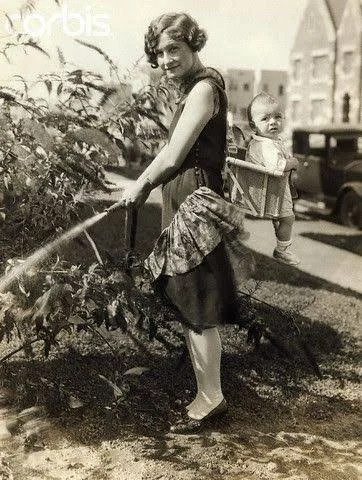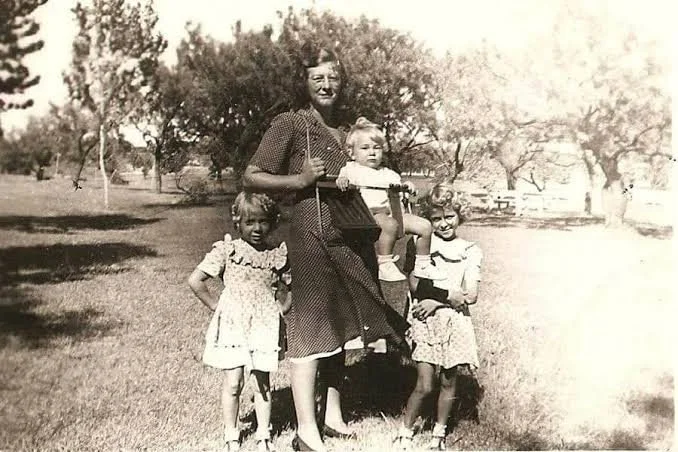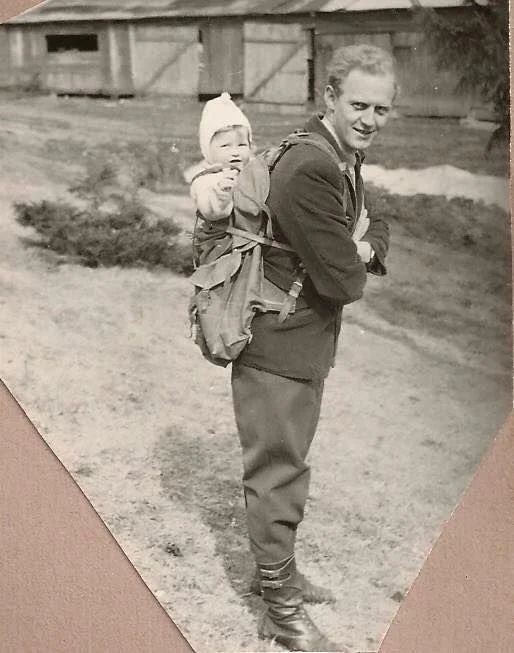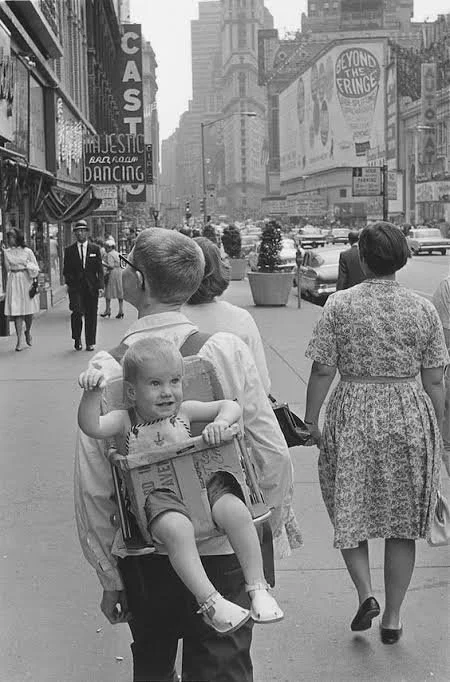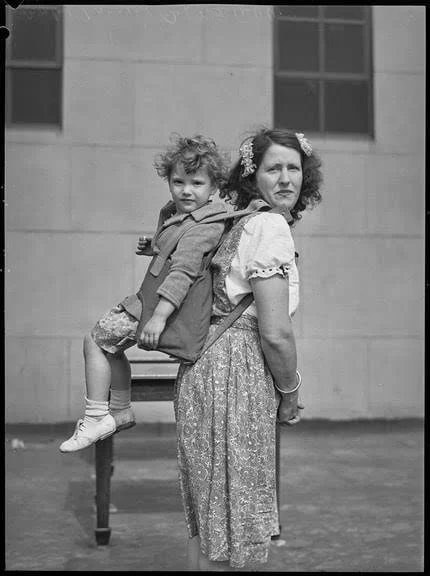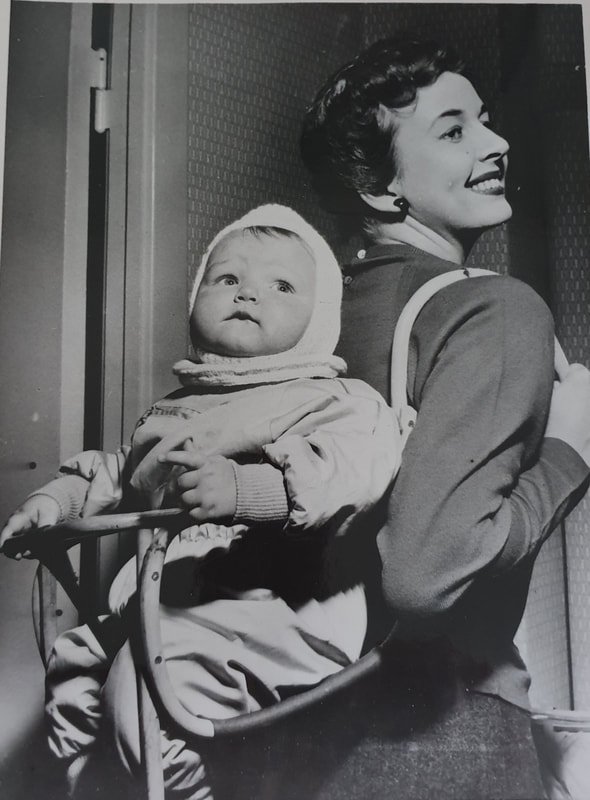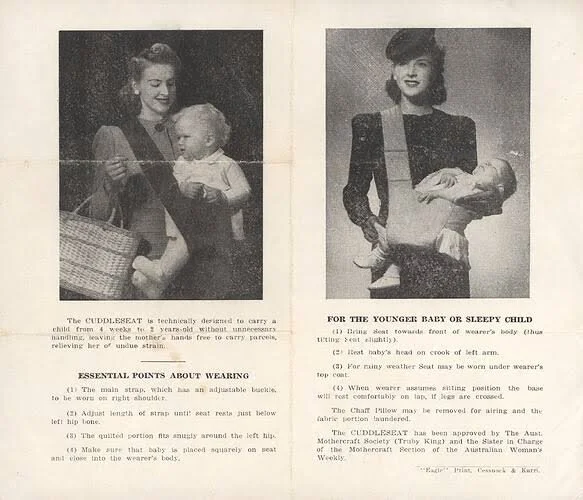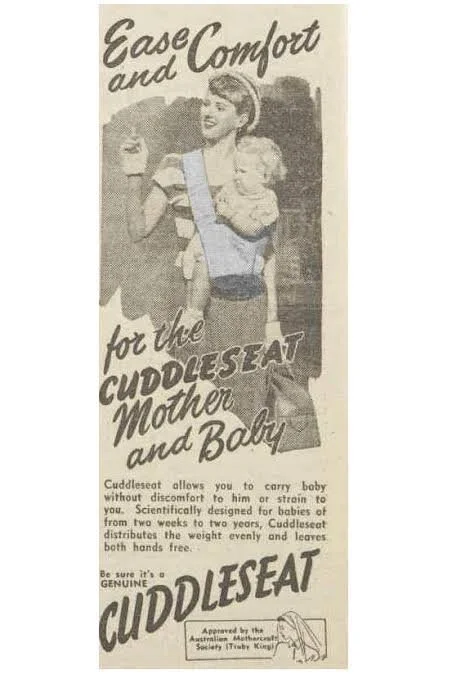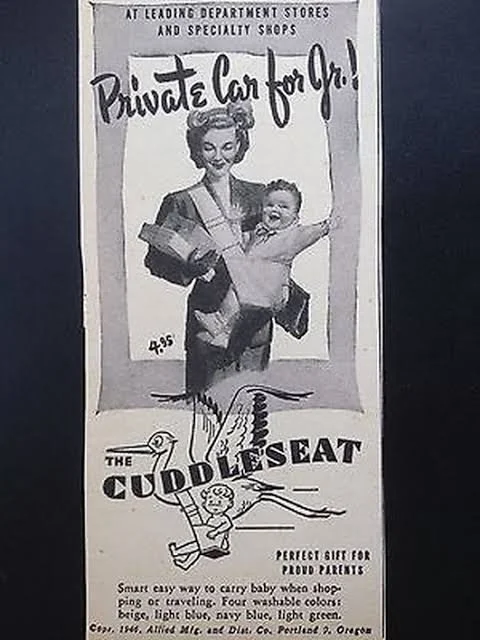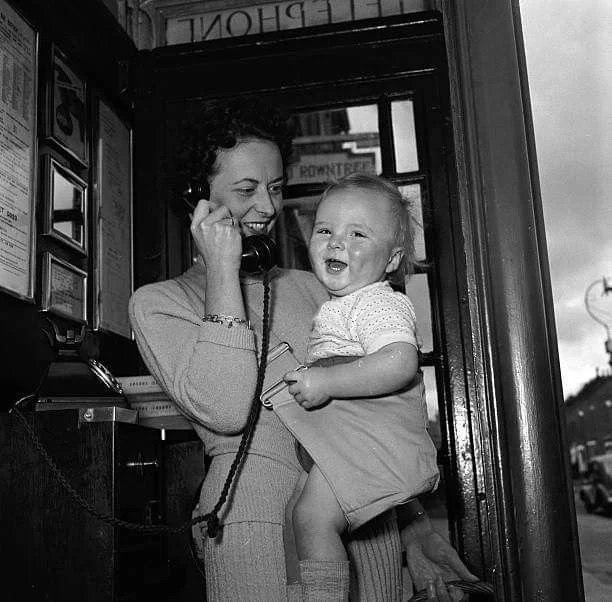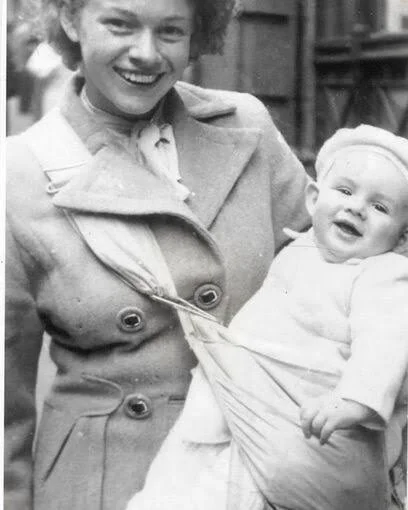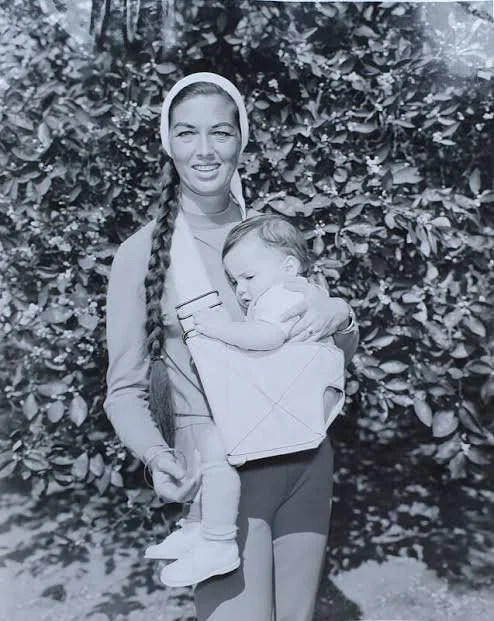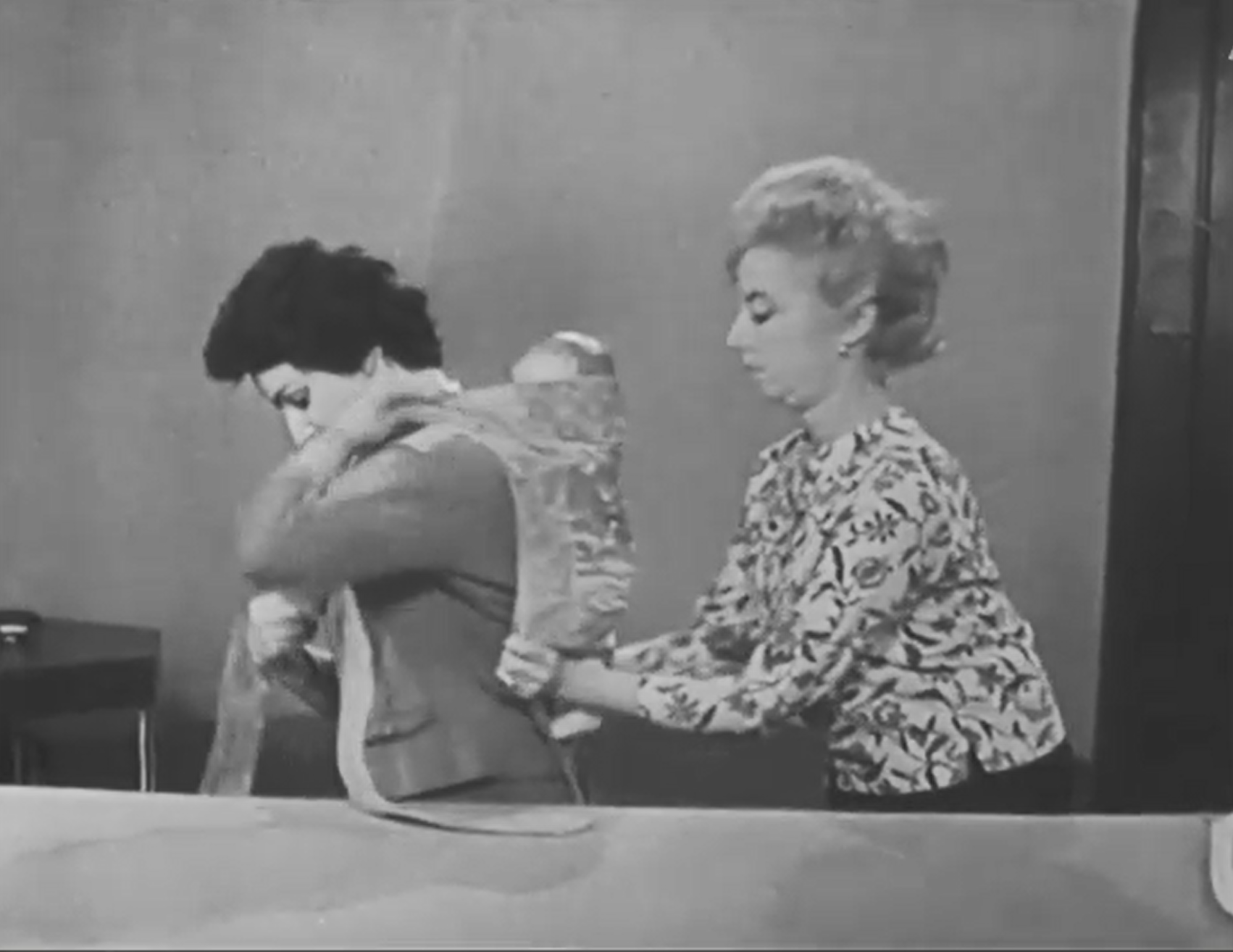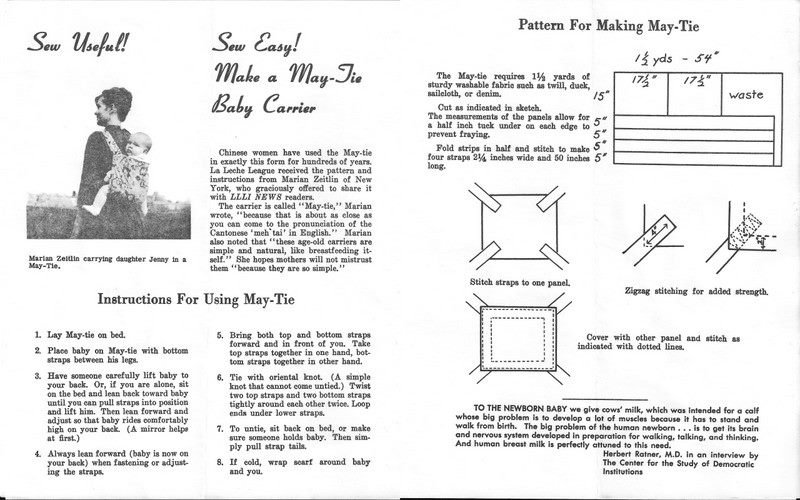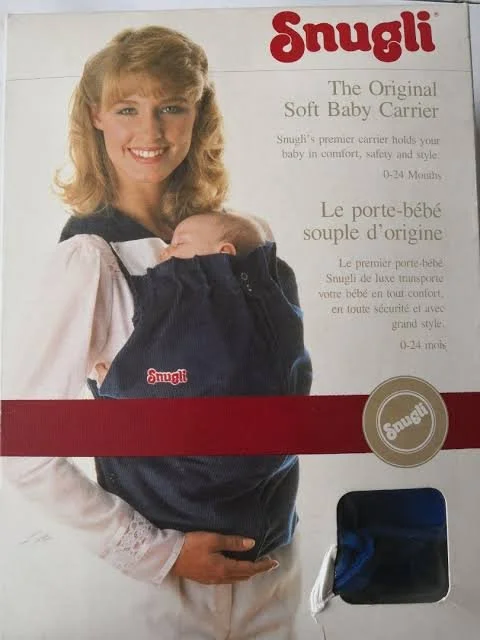Mid-Century Baby Carriers: Innovation and Adaptation.
The 20th century was a time of immense social and cultural change, and babywearing evolved alongside it. As industrialisation and modern parenting advice reshaped family life in Western countries, the simple act of carrying babies close — a practice so deeply woven into human history — began to fade. Yet, even during this time, passionate voices and innovative thinkers worked to keep this ancient tradition alive, adapting and reimagining it for new generations.
Early 20th century: Tradition meets industrial modernity
At the turn of the 20th century, most families worldwide still carried babies in traditional cloth carriers, wraps, and slings — practices handed down for generations. In Western industrialised societies, however, growing faith in science and technology, coupled with industrial production, began to separate infant care from ancestral practices. But there were some outliers - and thankfully, photographers.
This fascinating historical photo shows a baby carried in an early framed backpack-style carrier, accompanied by two adults walking on a path.
The image is from around the early 20th century (likely circa 1900–1920), in a Western context — quite possibly the United States or parts of Europe, given the clothing style (high-collared blouses, hats, and skirts typical of Edwardian and pre-1920s rural fashion).
The carrier itself features a rigid, ladder-like frame supporting a cloth seat or harness, a precursor to the modern metal-frame backpack carriers that became popular for hiking and outdoor activities mid-century. The baby is positioned facing outward, which would later be recognized as less optimal for comfort and hip development, but at the time it offered a practical way to keep the baby upright and visible.
This type of carrier illustrates the shift from purely fabric-based, body-conforming carrying traditions to more structured, equipment-inspired designs influenced by industrial and outdoor gear. It also reflects the early Western emphasis on practicality and hands-free transport, sometimes prioritizing functionality over physiological positioning.
The scene conveys a glimpse into rural or leisure life at the time, suggesting a family outing or work journey, and highlights the long-standing human need to keep babies close while moving through daily life.
This vintage photograph shows a woman in the United States during the late 1920s or early 1930s, busy ironing while carrying her baby on her back in a simple cloth carrier.
Her bobbed haircut and ruffled dress, along with the electric iron and socket, place this image firmly in the early 20th century, a time when home electrification was becoming more widespread. The scene likely reflects a rural or small-town context, where practical solutions like this were essential for mothers balancing household work and child care, especially during the hardships of the Great Depression.
This charming photograph from the 1920s or early 1930s shows a fashionable woman watering her garden while carrying her baby in a wooden framed back carrier.
The woman's stylish bobbed hair, decorative apron, and heeled shoes reflect the flapper era's embrace of modern femininity and domestic elegance. The wooden carrier, likely inspired by hiking and outdoor equipment, positions the baby facing outward and away from her body — a design that emphasizes utility but lacks the snug, close contact seen in traditional cloth carriers.
This image beautifully illustrates the cultural shifts of the early 20th century in Western societies, where modern mothers were encouraged to remain active and productive while maintaining a certain glamour. The photograph captures a moment of both practicality and social aspiration, showcasing how new carrier designs allowed mothers to juggle caregiving and daily tasks while conforming to contemporary ideals of style and independence.
The Great Depression (1929–1939)
Economic hardship forced many families to rely on extended kin networks and to repurpose traditional ways of carrying and caring for babies. Despite this, in wealthier Western nations, formal childcare devices and medicalised approaches continued to gain influence among those who could afford them.
This warm family photo from the 1930s or early 1940s (judging by the dress styles and quality of the photograph) shows a woman outdoors, surrounded by three young children.
She is using an early framed baby carrier to hold the toddler on her back. This type of carrier, sometimes called a "baby pack" or "frame carrier," likely featured a simple wooden or metal frame with a cloth seat, echoing the early designs used by outdoor enthusiasts and rural families at the time.
Post-war baby boom and consumer society (1950s–1960s)
After WWII, Western societies experienced a strong push toward nuclear family structures, suburban living, and a booming consumer culture. Baby prams, bottles, and rigid sleep schedules symbolised progress and modernity. Close carrying and breastfeeding were increasingly portrayed as outdated, even "primitive."
At the same time, parents in many non-Western cultures continued traditional carrying practices as part of daily life, using cloth wraps, shawls, and woven carriers.
This wonderful vintage photograph shows a man proudly carrying a baby in an early framed backpack-style carrier, likely from the 1940s or 1950s.
The carrier resembles a sturdy hiking rucksack adapted for child transport — a design that began to emerge in mid-century Europe and North America among outdoors enthusiasts. The child sits high, facing forward with a clear view of the world, suggesting a focus on exploration and adventure rather than intimate closeness.
The man's smart clothing and polished boots hint at a post-war era when fathers were increasingly encouraged to be active participants in family life, albeit still often within a framework of outdoor or leisure activities rather than day-to-day caregiving.
This image beautifully illustrates both a technological shift in baby carrier design — toward structured frames and outdoor functionality — and a cultural moment emphasizing fresh air, mobility, and a modern approach to fatherhood.
This mid-century street photograph captures a father carrying his child in a framed backpack-style carrier while strolling through a busy American city, most likely New York in the 1960s (note the "Beyond the Fringe" billboard, dating to around 1962).
The child sits in a simple metal and canvas frame carrier — a design that became popular for its lightweight structure and ease of use. Interestingly, the parents have added a piece of cardboard inside the carrier to create a flat seat or extra support. This kind of practical, makeshift adaptation highlights the ingenuity of parents making do with what they had on hand to keep their children secure and more comfortable.
The child’s posture, with legs hanging freely and a big, delighted smile, reflects the novelty and excitement of being carried high above the crowd. However, the dangling leg position and lack of ergonomic support in these early backpack designs contrast sharply with today's focus on hip and spine safety.
Images like this illustrate the shift toward convenience and modern consumer baby gear in the mid-20th century — a time when framed carriers began to be marketed for active, urban, and outdoor lifestyles, emphasizing mobility and freedom rather than close contact.
This historical photograph shows a mother carrying an older toddler in what appears to be a handmade or custom-fitted backpack-style carrier - possibly the Cuddleseat (see below) . The image was taken in Sydney, Australia, around the 1930s, when practical solutions for transporting young children were often created at home or adapted from available materials.
The child sits high and relatively upright, supported by what looks like a simple cloth or canvas seat panel attached to shoulder straps and a waist belt. The mother’s outfit and the carrier construction reflect a period when formal commercial baby carriers were rare in Western societies, and ingenuity was essential.
This style allowed caregivers to continue with daily tasks while keeping their children secure and included — a concept deeply rooted in traditional carrying practices worldwide. The photograph beautifully captures the resourcefulness of parents in this era, as well as the evolving cultural attitudes toward mobility and mother–child connection.
This elegant black-and-white photograph shows a smiling woman carrying her baby in a strikingly modern-looking back carrier, taken in Copenhagen, Denmark, around 1950.
The carrier features a rigid metal or wooden frame with a seat, creating a perched position similar to a chair. The baby is bundled warmly in a bonnet and snowsuit, suggesting use during colder months. Unlike soft cloth carriers that hold the child snugly against the caregiver’s body, this design positions the child away from the adult’s back, reflecting a period when baby gear was shifting toward convenience and separateness rather than constant closeness.
This style anticipated later framed backpack carriers popularized in Europe and North America in the 1960s and 70s for hiking and travel. It reveals a transitional moment in babywearing history: the move toward engineering “modern” solutions to child transport that often emphasized practicality over connection.
The image beautifully captures mid-century design optimism, highlighting a time when parenting products were increasingly influenced by industrial design and a fascination with futuristic, technical approaches to daily life.
The Cuddleseat
The Cuddleseat was designed and promoted in the early 1950s, with some advertisements appearing as early as 1951 in Australian publications like The Australian Women’s Weekly.
It was marketed as a "modern" alternative to arm-carrying, intended to give mothers more freedom while shopping or doing daily tasks. It was presented as ergonomic at the time, though by today’s standards it does not support the baby's legs or hips in an optimal position.
It was described as “safe, scientific, and modern”, aligning with the 1950s post-war push for convenient, "modern" mothering solutions.
In Australia, it was also promoted through The Australian Women’s Weekly and endorsed by hospitals such as the Women’s Hospital, Crown Street, Sydney.
Inventor and Patent
Despite extensive searching through public patent databases, there does not appear to be a single, clearly named individual inventor of the Cuddleseat. One UK ad lists Patent No. 585378, which is filed under "Furnex Ltd." — a company that distributed nursery and baby goods in Britain. In Australia, it was likely licensed or co-produced, possibly by Jack Crawford & Ryder Pty. Ltd., Sydney. It seems to have been a commercial design rather than a patented invention attributed to a particular private inventor.
Discontinuation
The Cuddleseat quietly disappeared from advertisements by the mid-to-late 1960s. There is no formal record of discontinuation, but several factors likely contributed:
Changing safety standards and rising concern about child hip development.
The introduction of more ergonomic framed carriers and soft structured carriers.
Shifts in parenting philosophies in the 1970s and 80s, favoring different forms of closeness and support.
Today, surviving examples are rare and usually found in vintage parenting collections.
1963 CBC Take 30 segment with Mrs Peterson
In 1963, Canadian television program Take 30, hosted by Anna Cameron, aired a segment featuring Mrs Peterson, a self-described baby-toting enthusiast. This appearance is now a rare and valuable historical glimpse into early efforts to reintroduce and normalize babywearing in Western society during the 20th century.
Mrs Peterson’s advocacy
Mrs Peterson was ahead of her time. At a point when Western parenting was heavily influenced by rigid schedules and the use of prams and bassinets, she promoted the idea of keeping babies close to their caregivers' bodies. Her message emphasized the emotional and physiological benefits of carrying — ideas that would not become widely accepted until decades later.
Adaptation of traditional carriers
She showcased and explained a carrier of her own design, which was based on the mei-tai (meh dai) and onbuhimo styles.
The mei-tai, originating from China, consists of a rectangular fabric body panel with four straps — two for the waist and two for the shoulders — allowing for versatile front and back carries.
The onbuhimo, from Japan, is traditionally strap-based without a waistband and often features loops or rings, used mostly as a high back carrier.
Mrs Peterson’s design drew from these concepts, adapting them for Western parents who were unfamiliar with tying techniques. This move helped bridge cultural practices and made babywearing more approachable in North America.
Reference to research
Remarkably for the time, Mrs Peterson referred to then-current research to support her advocacy. She cited Dr Knowles and his studies on the "transport response" — a term describing the calming, instinctive behavior babies exhibit when carried. This research included findings that an infant is comforted by rhythmic movements such as a 90 beats per minute walking or bouncing pace, which mirrors the tempo of maternal movement and heartbeat rhythms.
Cultural context
During her segment, Mrs Peterson also displayed examples of carriers from contemporary global cultures, underlining that carrying babies close was the human norm worldwide — not an outdated or primitive practice as some Western parents might have thought at the time. She showed images or samples from regions such as Africa, Asia, and Latin America, highlighting the diversity and universality of babywearing practices.
Legacy and importance
This CBC segment is a remarkable documentation of early babywearing revival efforts in North America. Mrs Peterson’s advocacy predated the larger natural parenting and attachment parenting movements that blossomed in the 1970s and 1980s.
Her work exemplified an evidence-informed, cross-cultural approach to parenting — valuing ancestral wisdom and pairing it with emerging scientific support.
Although she might not be widely known today, Mrs Peterson's public promotion of babywearing helped plant seeds that later grew into the global babywearing community we see today, with its celebration of traditional methods and modern innovations alike.
Pioneering Figures Who Shaped Modern Babywearing
Marian Thomson, Le Leche League
Marian Tompson was one of the seven founding mothers of La Leche League International (LLLI), established in 1956 to support and promote breastfeeding through mother-to-mother encouragement and education. As an advocate for responsive, intuitive mothering, Marian believed deeply in the importance of keeping babies close — not just at feeding times, but throughout daily life. She helped introduce and promote the use of the "May-Tie" carrier (a Western adaptation inspired by the traditional Chinese mei tai), encouraging mothers to carry their babies in a way that supported frequent breastfeeding and fostered strong bonds. By sharing patterns and instructions for sewing these simple, soft carriers, Marian empowered many mothers to reclaim traditional, hands-on ways of nurturing, seamlessly connecting breastfeeding advocacy with babywearing practices.
These illustrations are from my copy of The Womanly Art of Breastfeeding, published the year I was born, 1963
Mary Paton, Nursing Mothers Asssociation of Australia
Mary Paton was the founder of the Nursing Mothers' Association of Australia (now known as the Australian Breastfeeding Association), established in 1964. Inspired by La Leche League, Mary sought to support and empower Australian mothers to breastfeed confidently, even when societal trends favored bottle-feeding. Her leadership created a culture that valued closeness, responsiveness, and practical solutions for busy mothers. In this environment, soft carriers like the meh tai (an adaptation of the traditional Asian mei dai) found a natural place among breastfeeding families. By encouraging mothers to keep babies close and respond to their needs promptly, Mary helped pave the way for the acceptance of simple cloth carriers, integrating babywearing into modern Australian mothering as a natural extension of breastfeeding and nurturing.
Learn more about Mary Paton’s story here
Another initiative was to encourage mothers to make their own rebozo-style carrier
Photos and drawings of the Meh Tai featured across NMAA publications, including the iconic NMAA Cooks and Successful Breastfeeding, both published in 1976
Snugli: A pioneering soft baby carrier
The Snugli holds a special place in the global history of modern babywearing. Long before ergonomic soft-structured carriers like the Ergo or Tula captured the market, Snugli helped introduce the idea of soft carriers to Western parents.
The Snugli was developed in the early 1960s by Ann Moore, an American nurse. While working as a Peace Corps volunteer in Togo, West Africa, Ann was inspired by how Togolese mothers carried their babies securely on their backs using simple fabric wraps. She noticed that these babies seemed more content, quiet, and closely bonded with their mothers compared to babies in the U.S., who were often placed in prams or cribs.
When she returned home in 1964, Ann wanted to recreate that closeness with her own baby but struggled to find a comparable carrier in American stores. Together with her mother, she designed the first prototype — a soft pouch-like carrier that could hold the baby snug against the parent’s body. This new carrier allowed her to keep her hands free while maintaining constant contact with her baby.
The Snugli design evolved to include padded straps and buckles to appeal to Western parents who were used to more structured, supportive baby gear. Unlike traditional wraps or slings, the Snugli was easier for many to use because it didn't require tying or wrapping skills.
By the 1970s and 80s, the Snugli had gained popularity in the U.S. and began to appear internationally. It represented a shift away from rigid, narrow-based front packs (like the earliest versions of the BabyBjörn) and helped open the door for a more comfortable, baby-friendly approach.
In the 1980s, the Snugli brand was sold and eventually became part of the Gerry Baby Products company, which expanded and refined the line. Over time, newer Snugli models included more padding, adjustable head supports, and front- and rear-facing options.
When the Snugli arrived in Australia, it was distributed through large baby gear companies like Roger Armstrong and was featured in parenting magazines and store catalogs throughout the 1990s. For many Australian families at the time, it was their first experience with a "soft" baby carrier — more flexible and comforting than stiff framed backpacks or stroller-bound alternatives.
While today’s ergonomic carriers have moved beyond the original Snugli design, its influence is undeniable. It was one of the first products to bridge the gap between traditional carrying practices and Western parenting preferences, making babywearing more mainstream and accessible.
But innovation was about to explode.



